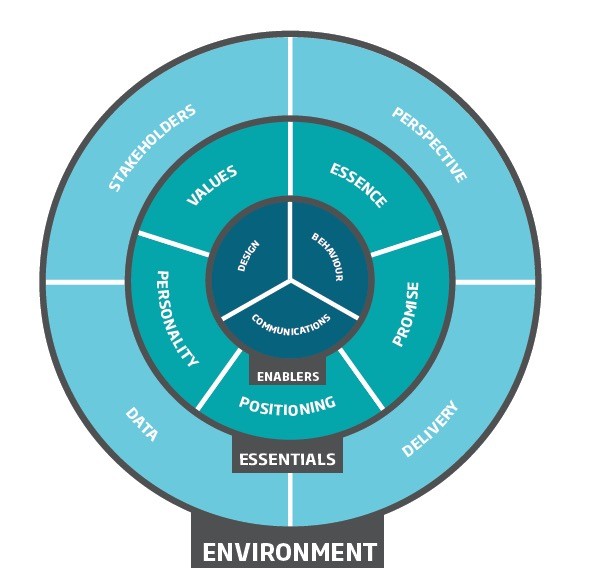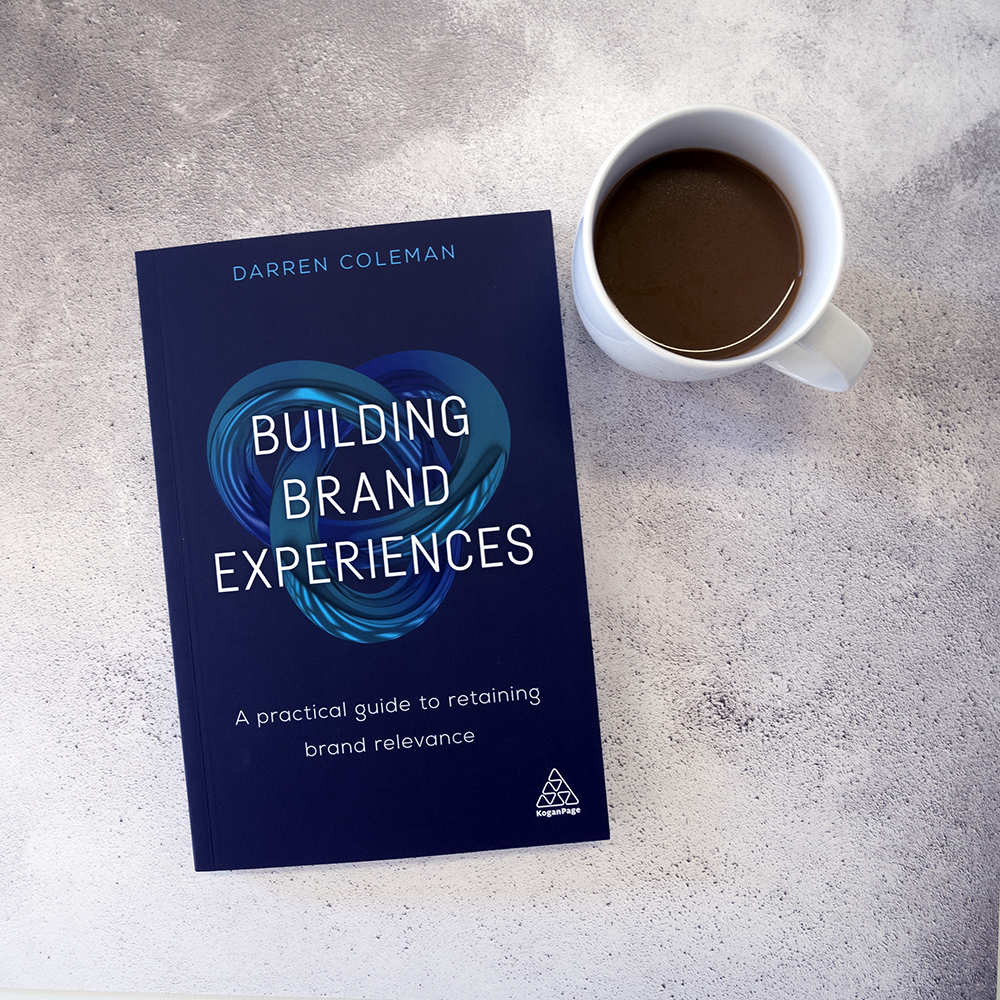
Let’s Talk Branding host Stef Hamerlinck kindly invited Wavelength’s Darren Coleman onto his show to talk all things related to brand experience.
You can listen to the full interview here.
Key points from the interview
The motivation for Darren’s book?
- Competing and driving revenues through brand experiences is firmly on senior marketing execs agenda.
- Many senior executives struggle to start and structure BX building initiatives with confidence and conviction.
- Darren’s book provides a practical management tool that solves that problem.
What is a brand experience?
- Carefully sequenced and structured interactions that a stakeholder has with a brand.
- Sequence does not imply a brand experience is linear. Customers can move between channels and back / forth in terms of progressing through the experience.
- Your BX should focus on helping customers achieve a certain task / goal.
The scope of brand experiences
- Marketers need to move on from customer experience to brand experience
- Build brand experiences for stakeholders and not just your customers. This could include your employees, investors and communities.
- Focusing on customer experience is myopic and oversimplifies the complexities of business today. It’s important brands move beyond customer experience and embrace brand experiences.
- Examples of stakeholders include:
- Employees: Employees need to be engaged with / align with your brand so they can deliver the associated experience in authentic, credible and natural ways. It’s worth remembering great brands are built from within – especially B2B / services brands where the behavioural element comes into sharper focus.
- Channel: Brands need to align channel partners such as agents and distributors with the experience or the brand will lose its lustre due to the inconsistency of experiences you deliver.
- Local communities: This stakeholder group is especially important for industries whose activities can cause disruption e.g. construction, oil, gas, transport, infrastructure etc.
- One person could hold multiple stakeholder positions e.g. an employee, customer, investor, member of local community. Brands need to remember this in today’s connected world.
- A clearly articulated brand facilitates consistent brand experience building – at scale – and prevents your brand from being perceived as being schizophrenic as it is (or should be) associated with a specific feeling.
The issue of control
- Brands that think they control how their brand is perceived and how the experience is delivered are deluded. Brands lost control a long time ago. This trend has been amplified by the growth of social.
- You can’t dictate the brand experience or it feels imposed. You need to couch the experiences you build in the context of carefully designed environments e.g. online, retail etc. These environments should provide your stakeholders with an opportunity to assess and engage with your brand via the experiences you build. Stakeholders can then decide how relevant your brand is to them. Doing this provides stakeholders with a sense of control over your brand experience. Very empowering.
The multidisciplinary nature of brand of experiences
- A paradox exists when you build brand experiences. The least senior people frequently have a disproportionate influence over how the brand is perceived. Take the CEO and receptionist of a hotel as an example.
- Ownership for BX lies with the CMO or CXO.
- Building BX is everyone’s job. This is why marketers need to have a broad range of skills so they can engage with key stakeholders across the organisation e.g. finance, operations, customer service, strategy.
Why are brand experiences becoming more important?
- A product-driven strategy can only take you so far before you exhaust meaningfully distinctive product features. This commoditises your offer and so exposes your brand to price-based competition.
- Humans are drawn to experiences because they can interact and engage with them. As a result, these experiences contribute to the fabric of who we are. This makes experiences intrinsically valuable and appealing to humans.
- The anticipation of an experiences releases dopamine – the feel good neural transmitter. Clever brands build a sense of anticipation in the lead up to their brand experience being delivered. This delivers a double serving of value in the form of stakeholders anticipating AND engaging with a brand experience.
- Experiences bring people together. Humans have a deep need for a sense of belonging. Brands like Vans use this knowledge to great effect via their communities and House of Vans brand experience.
- Brand drives the experiences you build, and brands are emotional. Humans’ decisions are primarily driven by the emotion we feel. This is why brands, enabled via experiences, are so powerful. They tune in to an emotional channel the human brain is receptive to. Recent neuroscientific research has empirically established the importance of emotion in human decision making. This kind of data gives CMO’s greater confidence when it comes to selling brand into the c-suite.
Steps to developing a good brand experience
- Brand Experience Environment e.g. understanding stakeholders, adopting a data-driven approach etc. These represent the context that shapes brand experience building.
- Brand Experience Essentials e.g. brand values, brand essence. The way you define and develop these intangible brand assets needs to be plugged into the BX Environment. For example, develop values that resonate with stakeholders and are based on data. This is how you build a relevant brand.
- Brand Experience Enablers (design, communications and behaviour). These are the tools you can use to bring your brand to life through the experiences you build. If you have a brand value of being “caring” your communications, design and employee behaviour need to bring this value to life. The same applies to other values and Brand Experience Essentials.
This three-step dance provides a marketing executive with a practical management tool that will help them build brand experiences at scale.
How do you measure brand experiences?
- It is advisable to obtain two lots of metrics when measuring brand experiences:
- Big picture metrics that span employee, brand and financial metrics. Big picture metrics deliver holistic and causal insights.
- Touchpoint metrics e.g. boarding a flight – check in, in-flight entertainment, disembarking.
- Take care with paralysis from analysis. Start small and grow from there.
- Make feedback actionable. You can achieve this by including brand performance metrics in performance appraisals tied in with employees’ bonus. A blunt but effective instrument.
- Short term vanity / ROI-driven metrics are harmful to brand building. Brand is a long-term play.
- The cycle of measurement depends on the size of the brand but bi-annual or quarterly is advisable. Take a small number of measures consistently, evaluate then iterate. This will help you identify which touchpoints drive performance and so fine-tune the brand experiences you build.
- A good way to focus the c-suite’s attention is to outline how a competitor has been successful. This usually works a treat.
How do you divide resources between building and managing experiences?
- The influential work of Binet & Field highlights a split between long term brand building and short-term activation. Broadly speaking this is a 60:40 brand:activation split but their more recent research highlights variations on this general rule of thumb. This influential work is well worth a look.
Any other points to make?
- Don’t talk about digital. Talk about building brands in a digital world.
- If building BX is new to your organisation start your internal PR campaign by sharing articles, insights to raise the BX agenda with key stakeholders. Another good place to start is brand values. Corporate values are something most in the c-suite will be comfortable with so brand values aren’t too much of a stretch . You can use the conversation around brand values as a platform to introduce other facets of the brand into the conversation when the time is right.
- Keep your brand lingo to a minimum. You’ll only alienate the c-suite with brand jargon.
- Start small, collect and analyse data, iterate (if needs be) then build experiences that are informed by insight. This will give you greater credibility and clout.
You can listen to the full interview here.
A big thanks to Stef for having me on his show. Top chap. Really enjoyed our chat. It’s worth connecting with Stef on LinkedIn as he shares lots of interesting content and knows lots of very fine folks. You can find out more about Stef’s show and the fine work he does here.
To watch this and other videos please head over to our YouTube channel.
Photo by Vlad Sargu
*****************************************************
>Download Chapter One of my book for FREE here
>If you like what you see, why now grab a copy of my book on Amazon?


